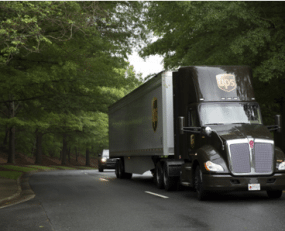
The Atlanta based giant saw its revenue in the second quarter improve by 3.8% year-on-year to $14.6bn, despite lower fuel surcharges and the effects of currency fluctuations. Income before tax increased by 3.9% year-on-year to $1.95bn.
The core US Domestic Express business saw revenue edge up 2.4% year-on-year in line with package volumes which were up 2.5%. Unit costs fell by 0.2% as a result of lower fuel costs and better productivity, which combined with harder margins, resulted in an operating profit increase of 2.7% year-on-year. Higher priced services such as ‘Next Day Air’ serving the Business-to-Consumer sector underlay this growth “outpacing business delivery growth more than five to one”.
‘International’ Express traffic was more buoyant. Revenue increased 1.1% despite the depressing effects of currency movements and lower fuel charges, but volumes rose by 3.9% and margins hardened, resulting in operating profit jumping by 11.1% as compared to the same period last year. Exports from Europe to the US drove much of this, growing in double-digit volumes.
Things at the ‘Supply Chain and Freight’ business were less happy. Coyote Logistics once again drove the business, increasing sales by 13.2%. However operating profits fell heavily, by 7.2% to $192m. It is unclear what is responsible for this fall, with UPS admitting that the ‘Less-than-Trailer-Load’ market in the US is very tough along with the sea and air forwarding business’ internationally. However UPS’ contract logistics business appears to be healthy, with operating profit increasing and revenue increasing with healthcare becoming “the highest revenue industry sector in our contract logistics business”.
UPS this quarter describes a familiar picture for the global logistics market generally, with e-commerce driving volumes whilst certain niches such as healthcare see sustained growth. Others, such as road freight or forwarding continue to be depressed, except for the most agile.
Source: Transport Intelligence, 3 August 2016
Author: Thomas Cullen